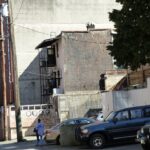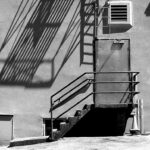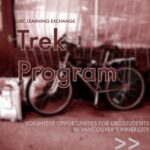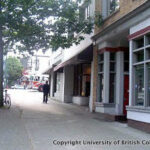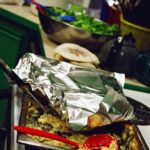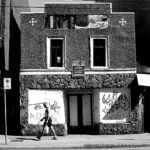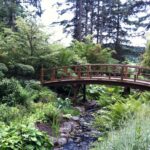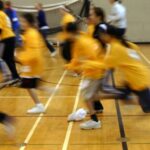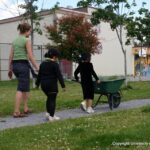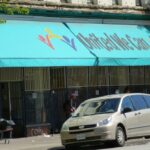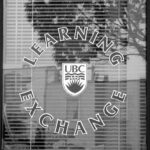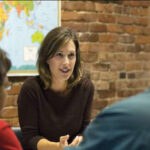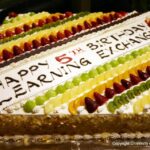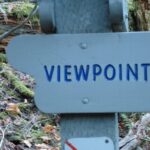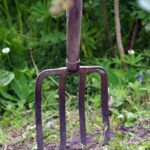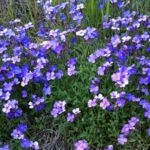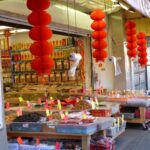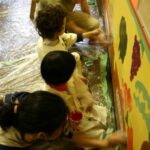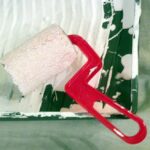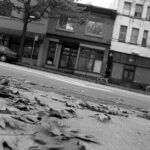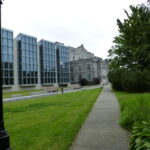How did the Learning Exchange go from being an initiative that local people resisted to a place they now describe as a refuge? How did Community Service Learning become a strategic priority for UBC? What challenges were faced and how were they overcome?
The Call
I stood in the tentative sunshine outside UBC’s Chan Centre for the Performing Arts and thought to myself, “She really means it.”
It was May 1998. I had just emerged from an open forum hosted by Martha Piper, UBC’s President. The forum gave the camp...
Getting to know the Downtown Eastside
The President’s office hired a second student to work with me on the community consultation. Brian Lee was a civil engineering student with strong people skills as well as an interest in social issues. Brian and I interviewed professionals, met with sm...
Becoming the Director
One day as the community consultation was winding down, I was chatting with Chuck Slonecker, the Acting Vice-President for External Affairs, who was responsible for the creation of UBC's presence in the Downtown Eastside. He said, “This initiative is g...
Starting the Trek Program
One recommendation arising from the community consultation was to get students doing volunteer work in Downtown Eastside organizations. Of all the ideas about how the university might engage with the Downtown Eastside, this one seemed to have the most ...
Climbing Mount Everest
In late 1999, Chuck Slonecker, the acting Vice-President who was overseeing the unfolding of the Downtown Eastside Initiative, suggested that, if I wanted to, I could bring in an outside expert to advise me. I immediately thought of John McKnight, then a...
Finding my right hand man
With the Trek Volunteer Program up and running, there were other recommendations from the consultation to be pursued. For example, it had been suggested that we organize a clothing drive at the end of the academic year to recycle all the clothes that...
Learning about Community Service Learning
Knowing that UBC’s administration wanted the fledgling Trek Volunteer Program to eventually evolve into service-learning experiences that would be linked to course work, I began to educate myself about what this approach to learning entails. I browsed un...
Opening the storefront
By the fall of 2000, I had recruited a small staff team to begin building relationships with local organizations and individuals. When Shayne graduated I appointed him to a full-time position as a paid intern. I also hired a manager (whose primary job ...
Moving in from the margins
Gradually, UBC’s initiative in the Downtown Eastside gained a sense of solidity. The Trek Program grew exponentially, engaging more students in a wider variety of volunteer placements every year. The afternoon computer drop-in developed a distinct f...
Music as a bridge
During the community consultation that preceded the establishment of the Learning Exchange, several people in the Downtown Eastside suggested that UBC should organize free music concerts in the neighbourhood. To explore the feasibility of this idea, Sh...
The first Reading Week Community Service Learning project
As the Trek Program grew and I heard more students talk about their experiences I began to understand the value of having students volunteering in community settings. But it was our first Reading Week project that really convinced me of the power of Community...
Engaging in inner city schools
One evening in 2002 I was reclining in my soaker tub reflecting on my day at the Learning Exchange storefront. I thought about the stories I was hearing from patrons who came to the drop-in. Many people’s lives had unraveled as a result of an episode o...
Unleashing students' creativity
One day in 2002 a colleague in UBC’s fund-raising unit called to tell me that the Learning Exchange had received a $1 million gift! An elderly couple who had attended UBC in the 1930s had indicated an interest in providing more than their usual modest a...
Binners on campus
In 2003 someone from UBC's campus security office phoned me to see if I could help them solve a problem. The unit had been receiving an increasing number of complaints from members of the campus community about the behaviour of binners. Binners or dumpster-divers ...
Trial and error at the storefront
As the Learning Exchange became a known and trusted entity, more people in the university and the community came to us with their ideas. Fortunately, Martha Piper was able to interest a small number of external donors in our work, so we had the funding ...
Starting the ESL program
In 2004, two graduate students taking a course in community economic development in UBC’s planning school elected to do a Community Service Learning (CSL) project at the Learning Exchange. Given the focus of their course on economic development, the s...
Becoming a success story
As my team and I established working relationships with more and more people in the Downtown Eastside and at UBC and as our programs gained momentum, the Learning Exchange became known as an exciting, innovative initiative. It became the exemplar of...
Growth in the Trek Program and Reading Week projects
Our efforts to get UBC students volunteering in Downtown Eastside organizations and inner city schools really paid off. The number of students participating in the Trek Program doubled every year until 2004-2005 when we had to cap enrollment at 800 because...
Seeing the value of Community Service Learning
As we developed the Trek Program and the Reading Week projects, my staff and I learned how to inspire students to be excited about working in the Downtown Eastside. We learned how to prepare students to be respectful, productive volunteers. More importantly,...
How Community Service Learning promotes learning
After working and talking with hundreds of students who were engaging in Community Service Learning (CSL) projects and placements, the Learning Exchange team came to believe that certain features of the way we implemented the CSL approach provided the ...
Integrating Community Service Learning into academic courses
From the time we created the Trek Program, UBC's goal of getting students’ volunteer work integrated into academic courses was always at the back of my mind. But I was following the advice I had been given to build a base of support among students before r...
UBC's vision
UBC’s vision provided a consistent touchstone for the work of the Learning Exchange. The consultation and planning process that Martha Piper initiated when she became UBC’s President in 1997 was the impetus for the university’s commitment to connect more ...
Building organizational culture
In the early years, members of the Learning Exchange staff team found themselves in a situation where the usual organizational “bones” were absent. We had little or no history, bureaucratic or administrative protocols, behavioural norms, sense of iden...
Five core practices
In the early days, the Learning Exchange staff team was flying by the seat of its pants: acting on instinct, learning by trial and error. We occasionally openly admitted to ourselves and others that we were making it up as we went along.
Fortunately,...
Aligning with our sense of purpose
At the same time the Learning Exchange culture and sense of purpose coalesced, our scope of activity increased dramatically. As we became known and trusted in both the university and the community, more people wanted to work with us. More great ideas ...
Stabilizing the ESL program
The English as a Second Language (ESL) pilot demonstrated that there was a real need for free programs where immigrants could practice their English. The conversation groups became valued not only because participants could practice colloquial English i...
Stabilizing the Reading Week model
The Trek Program grew quickly but its evolution was incremental and straightforward. We moved easily through the progression of getting started, figuring out what worked, and then creating an infrastructure to sustain the program. The evolution of the...
Collaborating with the YWCA
The Learning Exchange team learned early on that our work depended on our ability to collaborate with other organizations in the Downtown Eastside and other units at UBC. One of our most enduring and productive partnerships was with the YWCA of metro V...
Winds of change
By 2006 the overall Learning Exchange operation had settled into a comfortable groove. We had a coherent sense of purpose and a manageable set of programs that were aligned with UBC's vision . That year, the lawyers that had been occupying the floor ab...
Rebuilding the staff team
In the summer and fall of 2007 I hired five new staff members for the Learning Exchange, not counting the usual contingent of interns and part-time student staff who worked in the Trek Program. In 2008, I hired another nine full-time staff. By the end...
Re-thinking our approach to curricular Community Service Learning
The storm of staff departures in 2007 left no staff in the UBC-Community Learning Initiative (UBC-CLI), the entity that had been created to advance curricular Community Service Learning (CSL). I tried to recruit a new manager for the initiative in ...
The strategic plan for CSL and CBR
In early 2008, President Stephen Toope began the process of revising UBC’s vision and strategic plan so these institutional touchstones would reflect the priorities of his administration. UBC's scores on the National Survey of Student Engagement (NSSE) r...
New space, new funds
Around the same time the composition of the Learning Exchange staff team changed so dramatically, it became obvious that we would have to leave the original storefront. The building had serious problems related to its age and state of repair. Fortunately...
Taking my leave
By the summer of 2008, after working 70 to 80 hours a week for more than a year, I began to worry that I was burning out. The Learning Exchange was continuing to grow. Some programs were firmly established, but we did not want to stop being creative....

